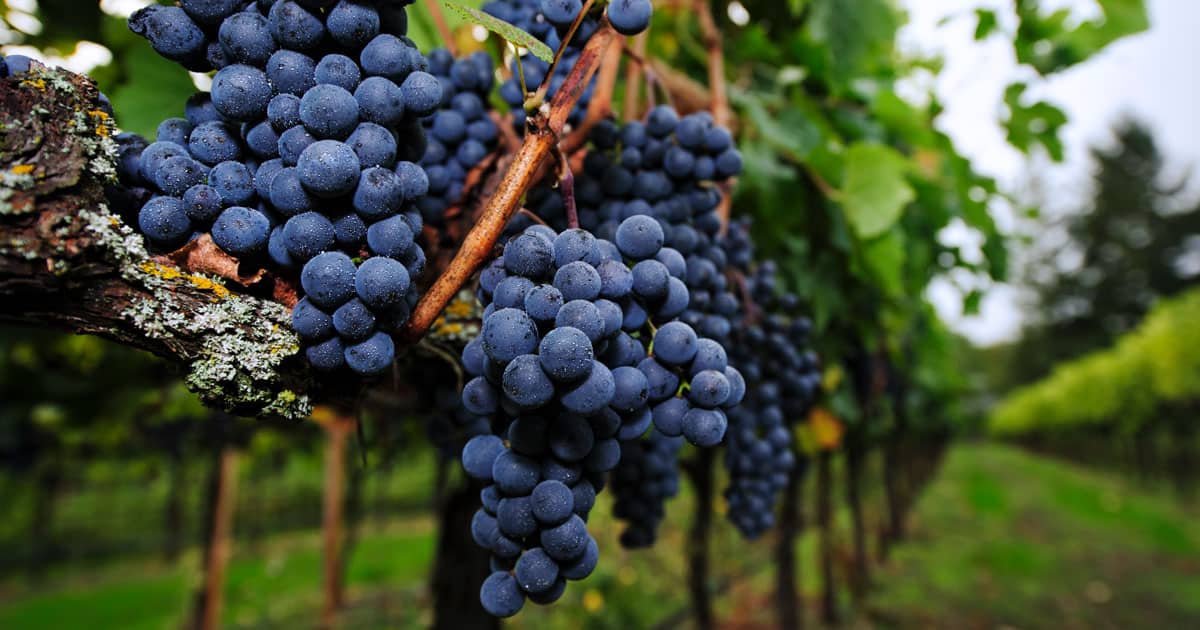
Increasingly, American consumers are beginning to think seasonally when it comes to the food they eat. With autumn just around the corner, many people might start thinking about peaches and apples, but another fruit is just coming to its harvest season. Though we can find it in jams and juices all year, Concord grapes are about to be in season.
Seasonality may be a sentiment that is driving more and more consumer purchases, but there will always be some staple flavors that are popular no matter the time of year. Here again, the Concord grape is found. Whether it is grape juice or a jelly sandwich, the Concord grape has become the flavor people think of when it comes to grapes. Dwarfing production of all other varieties, this hearty grape variety from New England is now grown around the country, and eaten throughout the world.
Grapes have been eaten and turned into wine by humans for centuries, with many varieties being identified and cultivated continuously since the Roman Empire. Despite the long history, it is a relative newcomer to the world that we think of most often when we think of grape flavors in food and drink.
Necessity is the mother of invention, and harsh New England winters made new grape varieties essential for European settlers during the 1800s. Ephraim Wales Bull is the first name in the history of the Concord grape. It was on his farm outside of Concord, Massachusetts, that the grape variety we know and love was developed.
In need of heartier grape vines that would be resistant to mildew and could withstand the shorter growing season in New England, Bull began experimenting with different varieties to find or create a grape that could thrive in the harsh environment the settlers found themselves in. Winemaking and wine grapes from Europe had made the journey over the Atlantic as Europeans settled in North America, but getting properly ripe grapes was proving difficult. After trying out 20,000 different seedlings, Bull had found his hearty table grape, and the Concord grape was born.
It would be another man with a last name familiar to us all that would take the success of the Concord grape and cement it as a mainstay of the American culinary landscape. In 1869 Dr. Thomas Welch, using grapes pressed from Concord grape vines growing on a trellis on his property, first produced pasteurized, non-alcoholic grape juice.
This product was an immediate hit with the Methodist church, who were keen to find a non-alcoholic juice to use for communion. Their affinity for the hearty purple grapes would help launch Dr. Welch’s Concord grape juice into wider popularity. It would be a war, though, that would truly make the Concord grape ubiquitous in kitchens across America.
During World War II, the U.S. Army needed to find new ways to feed hungry soldiers fighting across the world. The need for shelf-stable, protein rich sources of food led to the inclusion of peanut butter in G.I. rations. As it would turn out, Concord grape jelly had also been included in military rations, and with these two ingredients in close proximity, it was only a matter of time before the happy accident of the peanut butter and jelly sandwich came into being.
Today, Concord grapes are grown throughout the United States, with growers in Washington State producing the most of any region. More than 336,000 tons are now produced each year, which is a far cry from the 40 pounds Dr. Welch first harvested off his garden trellis a century and a half ago.
Though they are relatively new, Concord grapes have gained popularity for several reasons. Not only are these hardy grapes easy to work with for producers, but the health benefits of these antioxidant-rich grapes make them a valuable component of many nutrient dense foods.
For food manufacturers looking to enhance the flavor and nutritional value of their products, grapes are a worthwhile ingredient to consider. At FruitSmart, we not only provide grape juice in both traditional and organic varieties, but also in a host of other forms that can be included in a wide variety of products. Beyond juices, we offer Concord grapes in concentrates, essences and purees, and it doesn’t stop there. Grape seeds, seed powders, oils, and fibers are all natural upcycled products that have wide applications in cereals, fruit bars, and baking.
Hearty purple grapes from New England have become an expected flavor for many people, but that does not mean there is anything routine about getting quality products. At FruitSmart, we work hard to ensure that every product we provide, and every form in which we offer it, is the highest quality possible. That is what allows our partners to make final products with the flavor and nutritional value customers will seek out again and again.
If you are interested in learning more about how FruitSmart products could help improve the foods and drinks you produce, contact us today.
